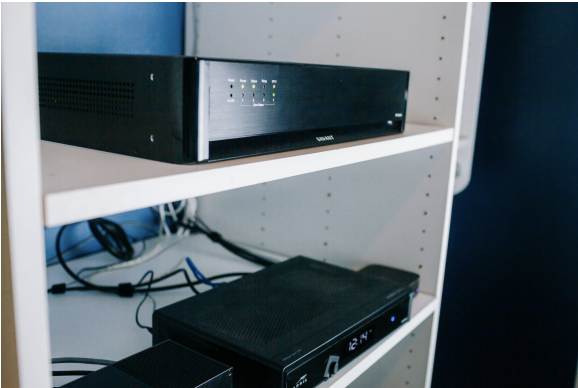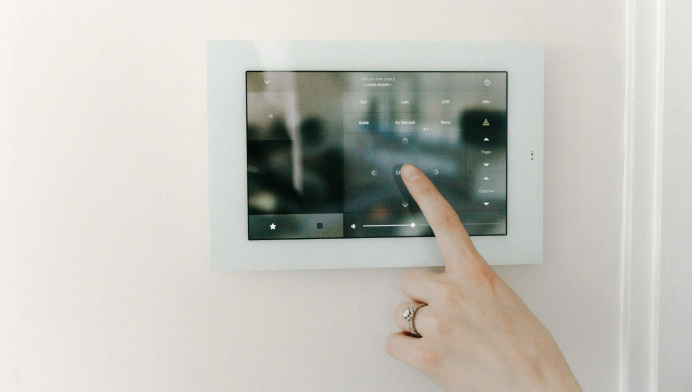Introduction to smart home and office automation
In today’s fast-paced world, where convenience and efficiency are highly valued, the concept of a smart home or office has gained immense popularity. Smart home automation is the process of integrating various devices and systems within your living or working space, allowing for seamless control and management. From lighting and heating to security and entertainment, smart home automation offers a wide range of benefits that can greatly enhance your daily life.
 Benefits of integrating your smart home or smart office
Benefits of integrating your smart home or smart office
Integrating your smart home or office brings forth a multitude of advantages. Firstly, it offers unparalleled convenience. With just a few taps on your smartphone or through voice commands, you can control all aspects of your home or office environment. Imagine being able to adjust the temperature, turn off the lights, and play your favorite music, all without leaving your comfortable couch.
Secondly, smart home automation promotes energy efficiency. By integrating your devices, you can create customized schedules and settings that optimize energy usage. For instance, you can program your lights to automatically turn off when no one is in the room or adjust the thermostat to save energy when you’re away. This not only reduces your carbon footprint but also helps you save money on utility bills.
Lastly, integrating your smart home or office enhances productivity and saves time. With automation, you can streamline routine tasks and eliminate the need for manual intervention. For example, you can set up your coffee machine to start brewing at a specific time in the morning or have your blinds automatically open at sunrise. These small conveniences add up and allow you to focus on more important aspects of your day.
The different types of smart home automation systems
When it comes to smart home automation, there are several types of systems available, each with its unique features and capabilities. The most common types include:
- Hub-based systems: These systems rely on a central hub device that acts as a control center for all connected devices. The hub communicates with the devices through wireless protocols such as Wi-Fi or Zigbee, enabling seamless integration and control.
- Wi-Fi-based systems: In this type of system, each device connects directly to your home or office Wi-Fi network. This eliminates the need for a central hub and allows for easy setup and control through smartphone apps.
- Voice assistant-based systems: These systems utilize popular voice assistants like Amazon Alexa or Google Assistant to control and manage smart devices. By simply speaking commands, you can control various aspects of your home or office environment.
- Proprietary systems: Some manufacturers offer their own proprietary smart home automation systems that are designed to work exclusively with their products. While these systems may offer a seamless experience, they can be limited in terms of compatibility with other devices.
 How to choose the right smart home automation system for your needs
How to choose the right smart home automation system for your needs
Choosing the right smart home automation system can be a daunting task, considering the plethora of options available. To make an informed decision, it’s essential to consider the following factors:
- Compatibility: Ensure that the system you choose is compatible with the devices you already own or plan to integrate. Check for compatibility lists provided by manufacturers or consult with an expert to avoid any compatibility issues.
- Scalability: Consider your future needs and choose a system that allows for easy expansion and integration of new devices. A scalable system will enable you to adapt and grow your smart home or office as technology advances.
- User-friendliness: Look for a system that offers an intuitive user interface and easy setup process. A complex and difficult-to-use system can lead to frustration and defeat the purpose of automation.
- Security: Prioritize systems that have robust security measures in place to protect your data and privacy. Look for features like end-to-end encryption and two-factor authentication to ensure your smart home or office is secure.
Common automation features for a smart home or office
Smart home automation systems come with a plethora of automation features that can transform your living or working space. Here are some common automation features to consider:
- Lighting control: With smart lighting, you can control the brightness, color, and scheduling of your lights. Set the perfect ambiance for any occasion or automate the lights to turn on and off at specific times.
- Temperature control: Smart thermostats allow you to adjust the temperature remotely and create personalized schedules. This ensures optimal comfort while maximizing energy efficiency.
- Security and surveillance: Smart home automation systems offer advanced security features such as motion sensors, door/window sensors, and surveillance cameras. Receive real-time alerts and monitor your home or office from anywhere in the world. Automated Living values and emphasizes the importance of privacy and security.
- Entertainment: Transform your living room into a personal theater with smart entertainment automation. Control your audio and video devices seamlessly, create personalized playlists, and stream your favorite content with ease. Enhancing security with smart home automation
One of the significant advantages of integrating your smart home or office with Automated Living is the enhanced security it provides. Smart home automation systems offer advanced security features that can give you peace of mind and protect your property. Here are some ways in which smart home automation enhances security:
- Remote monitoring: With surveillance cameras and motion sensors, you can monitor your home or office remotely. Receive instant alerts on your smartphone when any suspicious activity is detected.
- Smart locks: Replace traditional locks with smart locks that can be controlled remotely. You can lock or unlock doors from anywhere, ensuring that your home or office is secure even when you’re away.
- Integration with security systems: Smart home automation systems can integrate with existing security systems, such as alarms and smoke detectors. This ensures a comprehensive security solution that covers all aspects of your property.
- Simulated occupancy: With automation, you can create the illusion of occupancy even when you’re not at home. Program your lights and other devices to turn on and off at specific times, giving the impression that someone is present.
Smart home automation trends and future developments
Smart home automation is a rapidly evolving field, with new trends and developments emerging regularly. Here are some trends to watch out for:
- Voice control: Voice assistants like Amazon Alexa and Google Assistant are becoming increasingly popular, allowing for hands-free control of smart devices. The integration of voice control with smart home automation systems is expected to grow, making interaction even more seamless.
- Artificial intelligence: Artificial intelligence (AI) is playing a significant role in smart home automation. AI-powered systems can learn from user behavior and adapt settings accordingly, providing a more personalized experience.
- Integration with Internet of Things (IoT): The integration of smart home automation systems with the Internet of Things (IoT) is a growing trend. This allows for seamless communication between devices, enabling a truly interconnected and intelligent living or working space.
The game-changing potential of smart home automation
Integrating your smart home or office is an art that can truly revolutionize your daily life. The convenience, energy efficiency, and enhanced security offered by smart home automation systems are unparalleled. By carefully choosing the right system with Automated Living, considering your needs, and exploring the various automation features, you can create a living or working space that is truly intelligent and responsive. Embrace the art of automation and unlock the ultimate game-changing potential of a smart home or office.

























































































